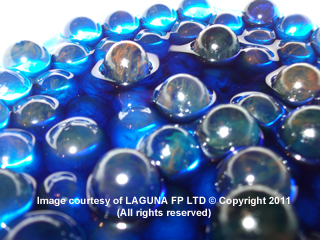What’s in it?
Water in the environment naturally contains bacteria, most of which are beneficial or at least harmless. Untreated water may also contain potentially harmful micro-organisms which are removed or destroyed during the treatment process. Many Municipal water companies use a variety of treatments in order to provide safe drinking water for our homes.
Examples of chemicals used in water treatment:
Chlorine is used to disinfect and kill any remaining harmful bacteria.
A small amount of chlorine remains in the water as it leaves the treatment works
At some treatment works chloramine is also used as an extra disinfectant.
Chloramine remains in the water longer than chlorine and is mostly used where water travels a longer distance.
What about the taste and smell?
Some people don’t like the taste or smell of chlorine. The closer you are to the works, the more likely you are able to detect chlorine.
Yorkshire water recommends venting it for a couple of hours if you don’t like it. I cant say I have ever noticed it myself.
Fluoride
The addition of fluoride to water supplies (known as fluoridation) is supported by some health professionals as a good way to protect our teeth from decay.
Although fluoride is naturally present in all water sources at varying levels, Yorkshire water don’t artificially fluoridate any of our water supplies.
The drinking water standard for fluoride is 1.5 mg/litre (1.5 parts per million).
The typical level of fluoride naturally present in Yorkshire water is around 0.1 mg/litre.
Lead
Lead pipes and fittings as well as lead solders could contaminate drinking water. There may be traces in your tap water if you have a lead supply pipe which connects mains to your home. Lead water supply pipes are more common in older properties, as is internal lead plumbing which can also be a cause.
Yorkshire water advise us that if water has been standing in lead pipes for long periods (for example, overnight) you shouldn’t use it for drinking, cooking or preparing babies’ feeds. About 1 gallon/4.5 litres (or half a washing-up bowl) should be flushed from the kitchen cold tap before use
Metals
Some metals occur naturally in many water sources as they are present in the soil or rock which rainwater passes through. Aluminium and iron compounds are also used at some treatment works as “coagulants” to remove impurities, but these materials and the natural material present are effectively removed by the treatment processes.
Nitrate
Nitrate in water supplies arises from both natural sources and from the use of fertilisers in agriculture. Any nitrate not taken up by crops is likely to be dissolved in rainwater and either percolates down into groundwater or runs off into streams and rivers.
The UK standard for maximum concentration is 50 mg/l
Some raw water sources contain higher levels of nitrate, these are blended with low nitrate water to ensure the treated water supplied is below the standard.
Pesticides
Pesticides covers a wide variety of different chemicals including insecticides, herbicides, fungicides and algaecides. They are present in the environment mainly due to their use in agriculture, industry and by Local and Highway Authorities.
Yorkshire water have installed water treatment processes for pesticide removal at all their treatment works where pesticides are occasionally present in the source waters.
Metaldehyde is an individual pesticide substance which is the active ingredient in many slug pellets; levels occasionally have been above the 0.1?g/l standard but below the health based value of 10µg/l advised by the Health Protection Agency.
So what does it all mean and does it really matter?
No water can be pure that is delivered to us through the tap but at least it is safe to drink. The only concern we might have as anglers is will it affect our baits, will the fish know or care?
Some anglers think that fluoride present in tap water could deter fish.
According to Wikipedia currently around 10% of the population of the United Kingdom receives fluoridated water.
For bait preparation at home it has been suggested by some anglers that you could remove this fluoride by venting for a couple of days outside in a sheltered spot before use.
But you cant do that, it will only concentrate more as the water evaporates.
Tap water also contains trace amounts of copper or lead (or both) depending on how old your house is.
Some old houses may have had some or all the lead pipes replaced with copper and/or plastic but may still include underground lead pipes leading up to the house.
Copper in trace amounts from pipes is essential to life, so too are the minerals calcium, sulphur and magnesium which are sometimes present in tap water. These minerals will not harm your bait, their inclusion in baits could be beneficial although some people believe we are probably consuming too much copper?
Hard water generally contains calcium and magnesium or lime (and other impurities) and forms a scum when used with detergent.
It also makes a rubbish cup of tea.
If your house has no lead pipes at all and your water is hard; with no fluoride it should be okay to use.
If your house has no lead pipes and your water is soft, and no fluoride, you could add a tiny pinch of magnesium sulfate or sulphate (Epsom salts) to make it hard, though probably pointless adding more if you live in Surrey.
Lake water may be your best option (even if it is stagnant and full of acid rain?), at least it would be familiar to the fish that live in it.
There is no doubt in my mind that certain chemicals present in tap water can either help attract or deter fish but it depends on where you live and what the concentrations might be. But what is an acceptable level for a certain chemical and do the fish know or care? I suspect they do know simply because fish are known to suffer the ill effects from pollution in lower concentrations than what might affect ourselves but probably don’t care much of the time especially as most of these contaminants are naturally present in the environment anyway, and if they seem to be confidently and competitively feeding on homemade baits made with less than pure tap water it shouldn’t matter at all. On a harder water however where the bites are few and far between it might pay to take these things into consideration. Most of us know that lead is poisonous for example and some people believe that any fluoride or chlorine present in the water could effect the smell of our baits. I suppose its down to concentrations and whether you believe as I do that fish can detect such minute levels.
Some of the minerals present in tap water could well be of some benefit to the fish. If we make up our bait preparations at home with tap water, a hard water that contains minerals and no fluoride is probably a good idea. The inclusion of minerals in our baits are nothing new of course. Most of us have probably added salt (sodium chloride) to our baits at some point to make them more attractive because we know that fish can detect it when the bait is in the water. I also believe the fish can detect other chemicals in the water too, including other kinds of minerals which are essential for their well-being. Generally if a mineral mixes well with water it is probably a good idea to add them and especially so if the water you are visiting doesn’t have so much. Alternatively if you’re stuck for ideas and you just want to offer them a source of calcium, you could do worse than adding crushed eggshells or snail shells to your homemade boilies which are predominantly a calcium carbonate crunch. If your tap water is soft (a cup of tea without scum on the top is a good indicator), then you might find the fish turn on to a bait that includes minerals, hence the reason for suggesting you might benefit by adding Epson salts to your baits?
Right, time for a nice cup of Yorkshire tea…
By Chris Wilson



